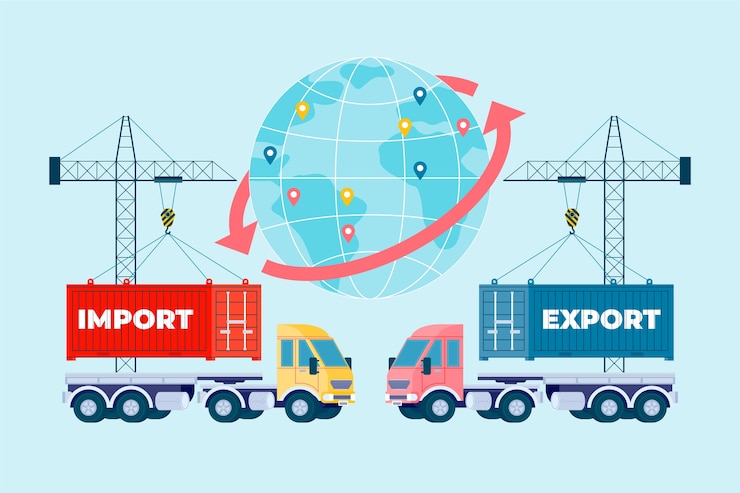The phrase “building again better” has been outstanding in phone calls for a restoration from the COVID-19 pandemic. It invokes the opportunity to use the disruption to rethink our approaches of organising societies and communities. And to use the recovery work to channel investments to additional inclusive, resilient and environmentally helpful outcomes.
An ever more various array of actors in different areas of the environment have been utilizing the phrase. US President Joe Biden created “Build Again Better” the leitmotif of his election marketing campaign and his changeover into the White House. A myriad of companies and imagine-tanks are proposing ways of “building back again better” all through the pandemic. These selection from the British Academy to the Planet Financial institution and even a coalition of company CEOs. In the meantime, civil society activists around the world connect the phrase to Arundhati Roy’s description of the pandemic as “a portal, a gateway involving just one planet and the next”.
But hidden in these many invocations are most likely disparate visions of what “better” in fact indicates and how to accomplish it. Also, there may be a require to reconsider irrespective of whether a disaster is certainly a excellent time to put into practice potentially much-achieving improvements.
In a not long ago printed paper I define the opportunities and risks involved with ambitions to “build back better” at this level in time.
Possibilities and risks
The phrase “building back better” entered the lexicon of policymakers, help employees and scholars in the wake of the 2004 Indian Ocean tsunami, though its simple notion has been about considerably longer. Considering the fact that then, a lot of article content have sought to define the time period, supply empirical analyses and make recommendations.
They present that creating back again greater “is pretty difficult to implement in exercise” and it may entail various emphases or proportions. There are the two prospects and challenges.
To start with to the prospects.
Building in the present-day context of the pandemic refers to broader, a lot more intangible public added benefits, these kinds of as general public wellbeing and welfare programs. Governments’ expansion of public health and fitness infrastructure in reaction to the virus may perhaps have extended expression gains, and it can make sense to discover those synergies and commit in them.
Yet another domain of public sector coverage innovation is in welfare. The pandemic has demonstrated that societies with no effective social welfare programs are not only far more prone to greater humanitarian and social fallout all through crises. They are also much more susceptible to the spread of disease, as people today without having ample sick leave or medical and unemployment insurance coverage are much more likely to go to perform regardless of sensation unwell.
There is as a result a growing recognition of social welfare as a form of “social immune system”. This has reinvigorated debates about a fundamental revenue grant. It is also highlighting the importance of community group activism in not only responding to immediate public wellbeing and welfare wants, but also in lengthier-expression social innovation.
Now to the dangers.
The initial revolves all-around timing. The interval next a disaster may possibly not be the very best time – morally and basically – to try for a longer time time period social adjust, presented that a lot of men and women have fast desires. There may well as a result be a stress among the fairness principle and the will need to channel help to the most susceptible, on the a person hand, and the lengthier term perspective encased in “build back better” ambitions, on the other.
Also, psychologists level out that particular person and collective final decision-earning capabilities are challenged in occasions of stress. We are additional probably to make judgments and conclusions primarily based on pre-existing biases when we are underneath pressure.
An case in point was the Sri Lankan government’s choice to establish a 200-metre “buffer zone” together the coast following the 2004 tsunami. But as a substitute of guarding men and women it experienced the effect of displacing inadequate fishers and modest, casual traders from their classic places adjacent to the beach front. Some of this may perhaps be explained as a form of “catastrophe capitalism”, in which elites make intentional use of a disaster to displace nearby persons for their possess gain.
My very own exploration in Sri Lanka recommended that unintended biases also performed a role. The buffer zone fiasco showed how, in a disaster, determination makers are prone to rash and unsubstantiated conclusions based on pre-present biases, which, as in this circumstance, involve a bias amid govt and small business leaders in opposition to informal financial activity. The resulting interventions have distinct “losers”.
What’s distinctive this time
The present-day disaster has at minimum 4 crucial, interrelated qualities that make it notably distinctive from past disasters evoking the contact to “build back again better”.
-
It is not a physical disaster, but about community wellness and socioeconomic contraction. The physical aspects of really setting up back greater do not implement. The phrase is thus employed in an even more metaphorical way, which could more maximize the dangers of vacuity, bias, or even intentional misdirection.
-
The pandemic is not a small and sudden party, but a drawn-out crisis involving cascading and interlinked disruptions. The challenge of balancing tensions concerning small-term reduction and more time-time period aims are acute, and they are more intricate by profound uncertainties bordering the trajectory of the disease.
-
COVID-19 has a world-wide geographic scope and affects most people, although in unequal ways. Thus, even though disasters this sort of as tsunamis, earthquakes or fires typically affect specific regions that can then receive qualified help from countrywide governments or even international aid endeavours, COVID-19 is impacting all nations around the world and this constrains the assistance presented to in particular susceptible locations or groups.
-
The COVID-19 pandemic includes interlinked overall health, financial and social crises. It hence results in an specifically advanced and intersectional set of complications. This signifies that people who invoke “building back again better” could possibly emphasis on a single unique facet of the crisis, or try to deal with a bewilderingly complex set of interactions throughout normal, social and financial methods. Possibly of these techniques generates threats of oversimplification, bias and unintended outcomes.
Warning demanded
The phrase “building again better” must be employed with caution. Diverse people today will have diverse views of what “better” in fact indicates and how to obtain it. Crisis situations exacerbate our inclination to emphasise pre-established templates for motion and to succumb to biases, these as the all-also-widespread bias versus informal economic activity.
But this does not indicate that we must give up on the essential aspiration invoked by the phrase. The critical prerequisite is to explicate and focus on the underlying tensions and synergies among limited- and lengthy-phrase aims, as effectively as the assumptions we hold all around what we take into consideration to be “better” and how to realize it.
Important conditions by which to evaluate this kind of assumptions and designs incorporate fairness and inclusion, in that the requires, interests, and participation of the inadequate and susceptible will need to be prioritised.





















